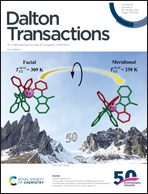Porphyrin and phthalocyanine-based metal organic frameworks beyond metal-carboxylates†
Abstract
Given the ubiquitous role of porphyrins in natural systems, these molecules and related derivatives such as phthalocyanines are fascinating building units to achieve functional porous materials. Porphyrin-based MOFs have been developed over the past three decades, yet chemically robust frameworks, necessary for applications, have been achieved much more recently and this field is expanding. This progress is partially driven by the development of porphyrins and phthalocyanines bearing alternative coordinating groups (phosphonate, azolates, phenolates…) that allowed moving the related MOFs beyond metal-carboxylates and achieving new topologies and properties. In this perspective article we first give a brief outline of the synthetic pathways towards simple porphyrins and phthalocyanines bearing these complexing groups. The related MOF compounds are then described; their structural and textural properties are discussed, as well as their stability and physical properties. An overview of the resulting nets and topologies is proposed, showing both the similarities with metal–carboxylate phases and the peculiarities related to the alternative coordinating groups. Eventually, the opportunities offered by this recent research topic, in terms of both synthesis pathways and modulation of pore size and shape, stability and physical properties, are discussed.

- This article is part of the themed collection: 2021 Frontier and Perspective articles


 Please wait while we load your content...
Please wait while we load your content...